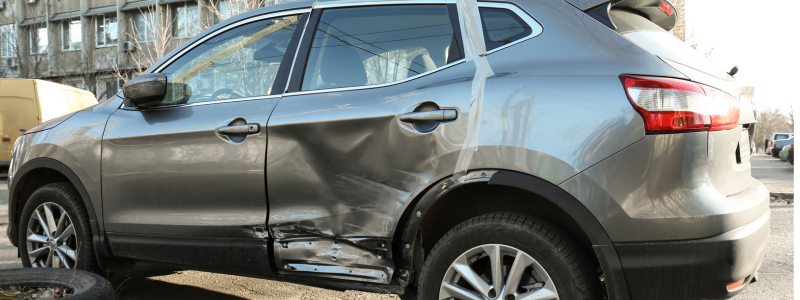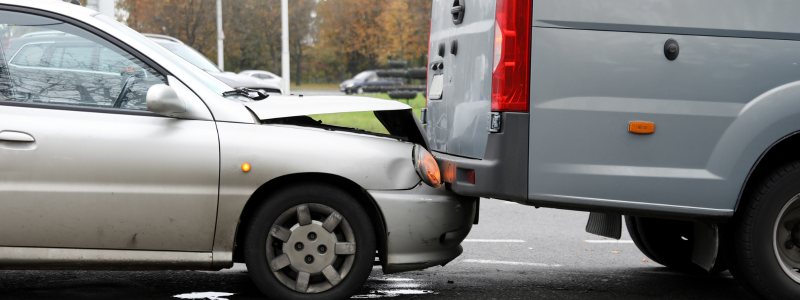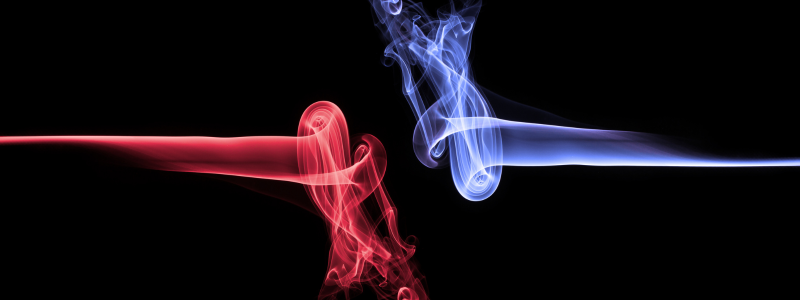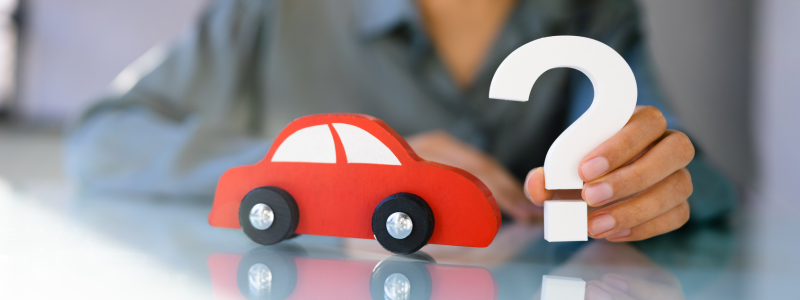What Does Cat S And Cat N Mean?
by Marsh Finance on Oct 15, 2024 3:07:30 PM
Key Summary
If you are buying a car, you might come across its history and see a past incident. Car write offs can happen, and a car can get back to being road worthy. Two of the most common write offs are category N and S, so let's take a look at them.
Cat N - a car in this group has suffered damage but this isn't structural and won't ruin the car. If the car is to be driven on the road again though, repairs will have to take place.
Cat S - a Cat S car can be driven on the road but will need repairs if it's returning to roads.
If you have experienced either of these write-offs, don't panic! Just remember to re-register your car with the DVLA, once it's been repaired.
When it comes to buying a new car, knowing about the history of your new wheels is key as it can impact your insurance costs. To learn more about how to save on car insurance, check out our dedicated piece. For the purpose of this piece, we've taken a look a car write offs. One of the things to check with a new car is whether it has been written off in the past. As part of your checks, you might come across different classifications of write-offs, like Cat S and Cat N, but are not sure what they mean. We've broken down each classification so that you know what to look out for when purchasing your next car.
👉 What is an insurance write-off?
👉 What are the different insurance write-off categories?
👉 What is Cat S?
👉 What is Cat N?
👉 What are the differences between Cat N and Cat S?
👉 Should I buy a car that's previously been written off?
👉 Conclusion
👉 Cat S and Cat N FAQs
.webp?width=768&height=288&name=Car%20Crash%20(1).webp)
What Is An Insurance Write-Off?
An insurance write-off is when a car is damaged to a point where it is either no longer roadworthy or repairing it makes no financial sense. In a write-off, your insurance company will pay you the current value of the car instead of repairing it. In order to know how serious the write-off is, your car will be assigned to a specific category. We’ve taken a look at each below.

What Are The Different Insurance Write-Off Categories?
There are six write-off categories, all varying in how damaged your car is. Let’s break down each category.
- Cat A - Category A is the worst level of write-off there is. At this point, the car is beyond repair and needs to be crushed.
- Cat B - This is when the main part of the car is damaged but other parts can be salvaged.
- Cat C - The car can be repaired but repairing it will cost more than what the car is worth.
- Cat D - You can repair the car for less than it’s worth but transporting it for repairs might end up costing more than the car is worth.
- Cat N - The car hasn’t suffered any major structural damage but must be repaired to make it roadworthy.
- Cat S - The car has suffered structural damage but can be repaired. It will need to be repaired to be ready for the road.
.png?width=800&height=300&name=Car%20Crash%20(1).png)
What Does Cat N Mean?
A Cat S car can be driven on the road again but will need repairs to make it roadworthy. The S itself stands for structural damage, but it can be repaired. Damage will likely have occurred to the chassis or suspension, but the important thing is that it can be fixed. Once the car is fixed, it’s important to remember that your car needs to be re-registered with the DVLA. Not doing this could lead to you receiving a fine. AutoTrader have listed some of the more common category s write-offs.
- Car chassis or frame damage.
- Damage to the frame of the car.
- Suspension damage.
- Severe roof damage.
- Damage to the floor pan.
- A severe front or rear-end collision causing structural damage.

What Is Cat N?
Cat N cars have suffered damage, but these aren’t structural. However, if the car is to be driven on the road, it will need to undergo repairs. Again, the car will need to be re-registered with the DVLA, or you could face a hefty fine. AutoTrader has detailed some of the more common examples of a Cat N write-off.
- Cosmetic damage like dents and scratches.
- Electrical issues like wiring.
- Interior damage like damaged seating and water damage.
- Damage to non-structural components.
- Engine and gearbox issues.
- Damage to windows or windscreen.
- Damage to the exhaust or catalytic converter.
- Cosmetic fire damage.

What Are the Differences Between Cat N And Cat S?
The main difference between a Cat N car and a Cat S car is the level of damage. In a Cat N car, non-structural damage has occurred. Whereas for a Cat S car, structural damage has occurred. Both can be driven on the road again but will need repairs in order to be road-worthy. Cat N issues tend to be more cosmetic, and Cat S issues more structural.

Should I Buy A Car That’s Previously Been Written Off?
You can buy a car that’s been written off in the past, but you should always request an inspection before making the final decision. Cars that can be bought after undergoing a write-off fall in the categories C,D,N, and S. Therefore, when it comes to making a car purchase, if you notice a previous write-off, it is best practice to request a full inspection of the car to make sure all previous issues are resolved. Alternatively, you can bring a mechanic with you to inspect the car in person.
Conclusion
Write-offs happen, and this doesn’t necessarily mean that the car is ruined. For Cat A and B, the car is unfortunately unrecoverable, but for the other categories, C,D,N and S, the car can get back to being road ready. If you are about to buy a car and spot a past write-off, don’t panic. Order an inspection of the car to make sure all previous issues are corrected, and if they are, you can go ahead and buy your car!

Cat S And Cat N FAQs
What does cat n mean on a car?
A Cat S car is one that has suffered structural damage, but this damage can be repaired, and the car can return to the road (provided the repairs are made).
Should I buy a cat s car?
If you are looking for a cheap option, a cat s car can be good. With a cat s car though there are plenty of risks that you need to weigh up. The two main issues are:
- A higher insurance cost.
- The risk of past issues re-surfacing.
A cat s car has suffered past structural damage, and you don't want this to repeat itself. If you are looking to buy a cat s car, check over the car as many times as possible, and seek mechanical opinions about whether this car has recovered from its previous write-off.
Does cat s affect insurance?
Cat s cars are more expensive to insure. This is because cat s cars have previously suffered structural damage, and the risk of this happening again leads to higher insurance costs.
How much more does it cost to insure a cat s car?
There's no set number, as it depends on the state of the damage the car suffered, plus personal factors about yourself and your driving history. Nevertheless, it will cost more to insure a cat s car vs a non-cat s car.
Is cat s bad?
Cat s isn't bad, as long as the previous structural damage has been repaired. This is a big if, and something you should seriously consider before buying a cat s car.
Where does it say cat s on a log book?
It should appear in the 'special notes' section of a car log book, and will mention that the car has suffered previous structural damage. If this is the case, conduct thorough checks with the help of a professional to make sure the issue has been fixed.
What is a cat n car?
A Cat N car is one that has suffered non-structural damage, but this can be repaired, and the car can return to the road (provided the repairs are made).
Does cat n affect insurance?
Cat n does impact car insurance. Even though previous damage is non-structural, this still represents a risk to insurance providers. In most cases, you will be able to get insurance on a cat n car, but some providers may refuse insurance altogether. Even if you were to get insured on a cat n vehicle, your insurance costs will be higher than for the same car without a cat n status.
How to remove cat n from car
You can't remove cat n from a car once it's registered. This stays with the car forever, and removing it is illegal.
Cat n vs cat s, what's the difference?
Cat s stands for structural damage, which is when the car needs significant repairs to get back to being road worthy. Cat n stands for non-structural damage, where the issue isn't as serious, but repairs are needed to get the car back on the road. Cat s cars are harder to insure than cat n cars, and face higher premiums.
Do you have to declare cat n to insurance?
You must declare a cat n car to your insurance. Failure to do this can lead to severe penalties.
Cat d vs cat n
A cat d is more serious than cat n, as the repairs cost more than the car is worth itself. You are more likely to struggle to insure a cat d, as it's classed as a write-off. Out of the two, cat n cars are cheaper to insure.
- December 2025 (4)
- November 2025 (3)
- October 2025 (12)
- September 2025 (8)
- August 2025 (13)
- July 2025 (25)
- June 2025 (17)
- May 2025 (10)
- April 2025 (5)
- March 2025 (6)
- February 2025 (4)
- January 2025 (4)
- December 2024 (10)
- November 2024 (14)
- October 2024 (12)
- September 2024 (25)
- August 2024 (74)
- February 2024 (1)
- May 2023 (2)
- March 2023 (1)
- February 2023 (1)
- December 2022 (1)
- October 2022 (2)
- August 2022 (1)